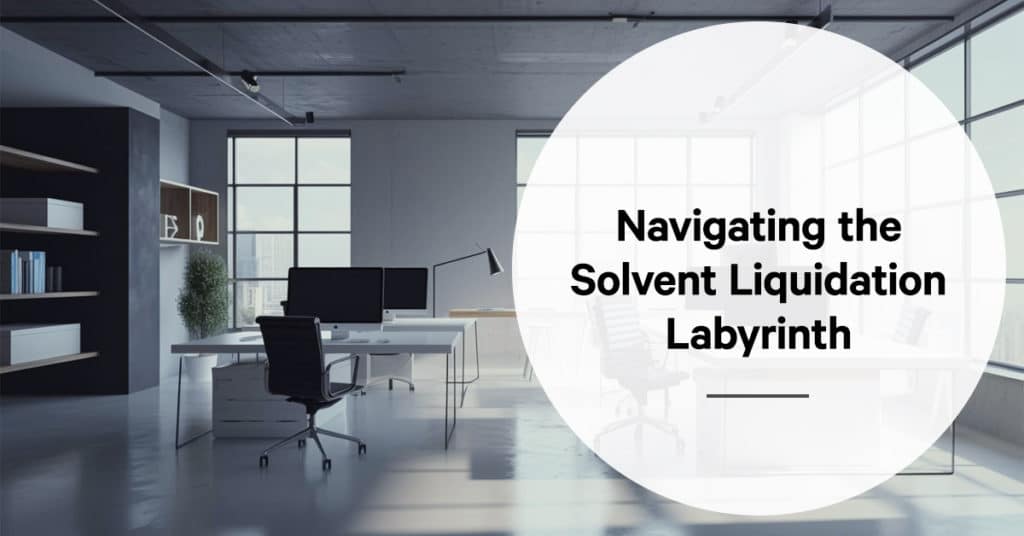The business of company liquidation in the UK is vast and multifaceted. One area that often gets overlooked is the solvent liquidation process. Contrary to the more widely discussed insolvency scenarios, solvent liquidation, also termed Members’ Voluntary Liquidation (MVL), is a procedure for winding up a solvent company. This article seeks to shed light on understanding solvent liquidation and the steps to take before initiating solvent liquidation.
What is Solvent Liquidation (Members’ Voluntary Liquidation)?
Solvent liquidation, also known as Members’ Voluntary Liquidation (MVL), stands as a crucial financial process for businesses that find themselves in a position of financial strength and stability. Unlike its more tumultuous counterpart, insolvent liquidation, MVL is a strategic and controlled method of winding down a company that is still in good financial health. This process allows shareholders to unlock the value tied up in the business and distribute it in an orderly manner. Whether a business owner is seeking to retire, or a shareholder looking to close a chapter while safeguarding their interests, understanding the nuances of MVL is essential for making informed decisions.
Several reasons might prompt this decision:
A myriad of distinct motivations can underlie this critical decision, with each reason as individual as the businesses themselves. From achieving optimal returns on investments to pursuing new avenues of growth, the triggers for choosing solvent liquidation are as diverse as the enterprises that embark on this transformative journey. Some may see it as a strategic manoeuvre to streamline operations, while others view it as a prudent step towards ensuring a smooth transition of ownership. By recognising the multifaceted nature of these motivations, businesses can navigate the solvent liquidation process with a clear vision and purpose. Driving forces that lead companies to embark on this path include:
- Changing circumstances in the market or industry render the business model less profitable or redundant.
- Business owners may choose to retire and not have an heir or successor to take over.
- The company may have been set up for a specific project that’s now complete.
One of the primary attractions of an MVL is the tax efficiency it provides. Specifically, in the UK, the funds distributed during the MVL process can often qualify for Business Asset Disposal Relief (formerly known as Entrepreneurs’ Relief), resulting in a reduced Capital Gains Tax rate.
Steps to Take Before Initiating Solvent Liquidation:
Embarking on the process of solvent liquidation marks a significant milestone in the lifecycle of a company. It’s a strategic move that requires careful planning, precise execution, and a thorough understanding of the steps involved. Before taking the plunge into this transformative financial endeavour, there are crucial preparatory measures that must be taken to ensure a seamless and successful liquidation process.
- Preliminary Assessment: The initial step is a thorough evaluation of the company’s financial status to confirm its solvency. This often involves a detailed review of assets, liabilities, and future and contingent obligations. The company must be able to pay its debts within 12 months of the start of the liquidation.
- Declaration of Solvency: Once sure of the company’s solvency, the directors must swear a statutory declaration of solvency. This document, prepared in accordance with the Insolvency Act 1986, states the directors’ belief that the company can pay its debts in full, along with interest, within a specified time, usually 12 months.
- Choose a Licensed Insolvency Practitioner (IP): An MVL can only be undertaken with the involvement of an IP, who will act as the liquidator to oversee the process. It’s imperative to choose an IP with experience in MVLs to ensure the process runs smoothly.
- Shareholders’ Meeting: A general meeting of the shareholders is then convened. Here, the shareholders will pass a resolution to wind up the company and appoint the IP as the liquidator. A 75% majority (by value) of the shareholders is required to pass the winding-up resolution.
- Settle Liabilities: After the MVL has begun, the liquidator will settle all company liabilities. This includes paying off any creditors. Even though the company is solvent, there might be outstanding liabilities that need addressing
- Distribution of Assets: Once all liabilities are settled, the liquidator will distribute the remaining assets amongst the shareholders in accordance with their rights and the company’s articles of association.
- Dissolution: After all assets are liquidated and funds distributed, the liquidator will send final accounts to the shareholders and the Registrar of Companies. The company will then be dissolved, typically three months after the final accounts are sent.
Here to help
Opting for a Members’ Voluntary Liquidation in the UK can be a strategic decision for a solvent company, ensuring that shareholders receive the maximum return in the most tax-efficient manner. However, the process requires attention to detail, an understanding of the legal requirements, and often the guidance of an experienced insolvency practitioner. The sooner a financial problem is recognised, the sooner it can be dealt with and the more potential the company has to recover. For more information on how our professional insolvency practitioners may be able to help your business, contact us today 0800 246 5895, we’re here to help you understand your options so get in touch today.




